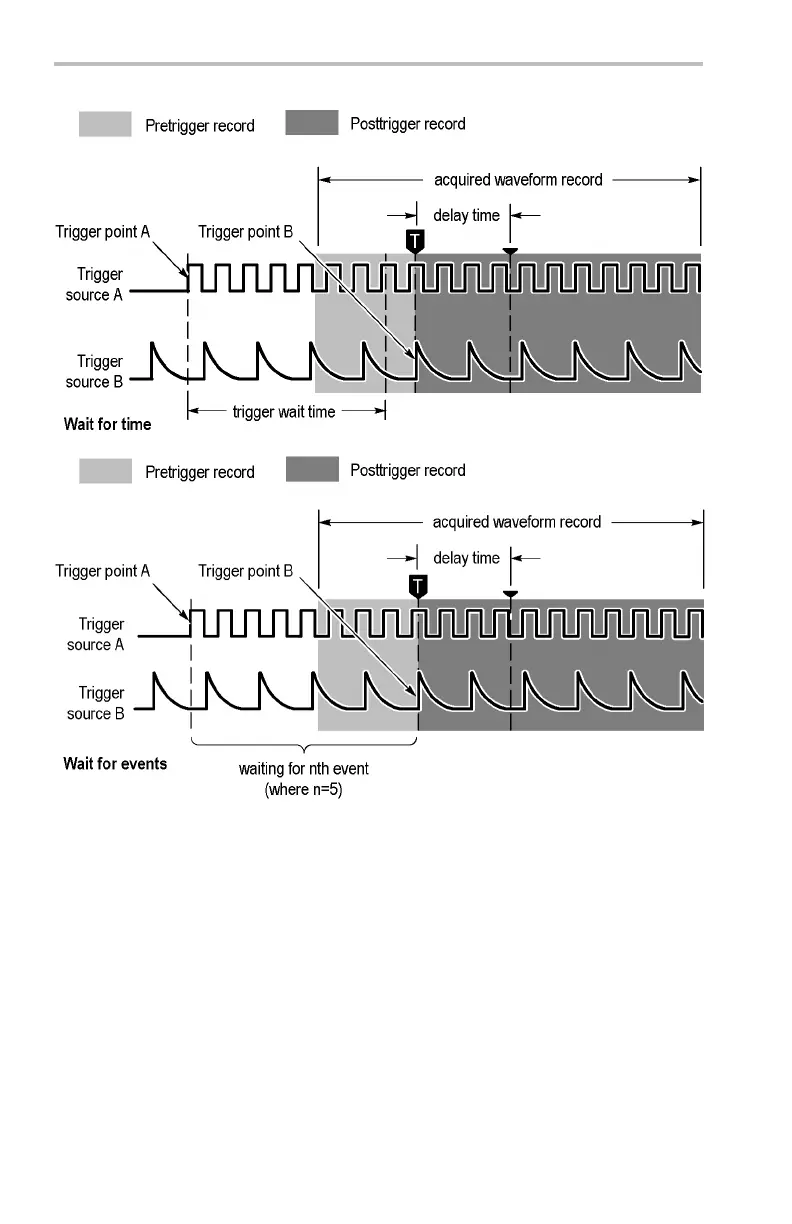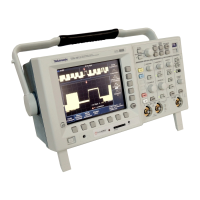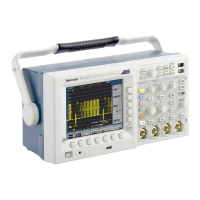Reference
Key Points
Using Probes wi
th the TekProbe II Interface. When you attach a probe with the
TekProbe II interface, the oscilloscope sets the channel sensitivity, coupling, and
termination resistance automatically to match the probe requirements.
Vertical Preview. When you change the Vertical Position or Scale controls while
the acquisition is stopped or it is waiting for the next trigger, the oscilloscope
rescales an
d repositions the selected waveform in response to the new vertical
control settings. You may see a clipped waveform if the original acquisition went
off the screen. The oscilloscope then uses the new settings for the next acquisition.
In contrast to horizontal preview, the math waveform, cursors, and automatic
measurements remain active and valid when using vertical preview.
The Difference Between Vertical Position and Offset. Vertical position is a display
function. Adjust the Vertical position to place the waveforms where you want
to see th
em. The waveform baseline locations track adjustments made to their
positions.
When yo
u adjust vertical offset you see a similar effect, but it is actually quite
different. Vertical offset is applied before the oscilloscope preamplifier and can
be used to increase the effective dynamic range of the inputs. For example, you
can use vertical offset to look at small variations in a large DC voltage. Set the
Vertical offset to match the nominal DC voltage and the signal appears in the
center of the screen.
50 Ω Protection. If you select the 50 Ω termination resistance, the maximum
vertical scale factor is limited to 1 V/div. If you apply excessive input voltage,
the oscilloscope automatically switches to 1 MΩ termination resistance to protect
the internal 50 Ω termination.
Ref Button
Push the Ref button to show the reference menu. Push one of the submenus to
display a reference waveform or make it the selected reference waveform.
116 TDS3000C Series Oscilloscope User Manual
